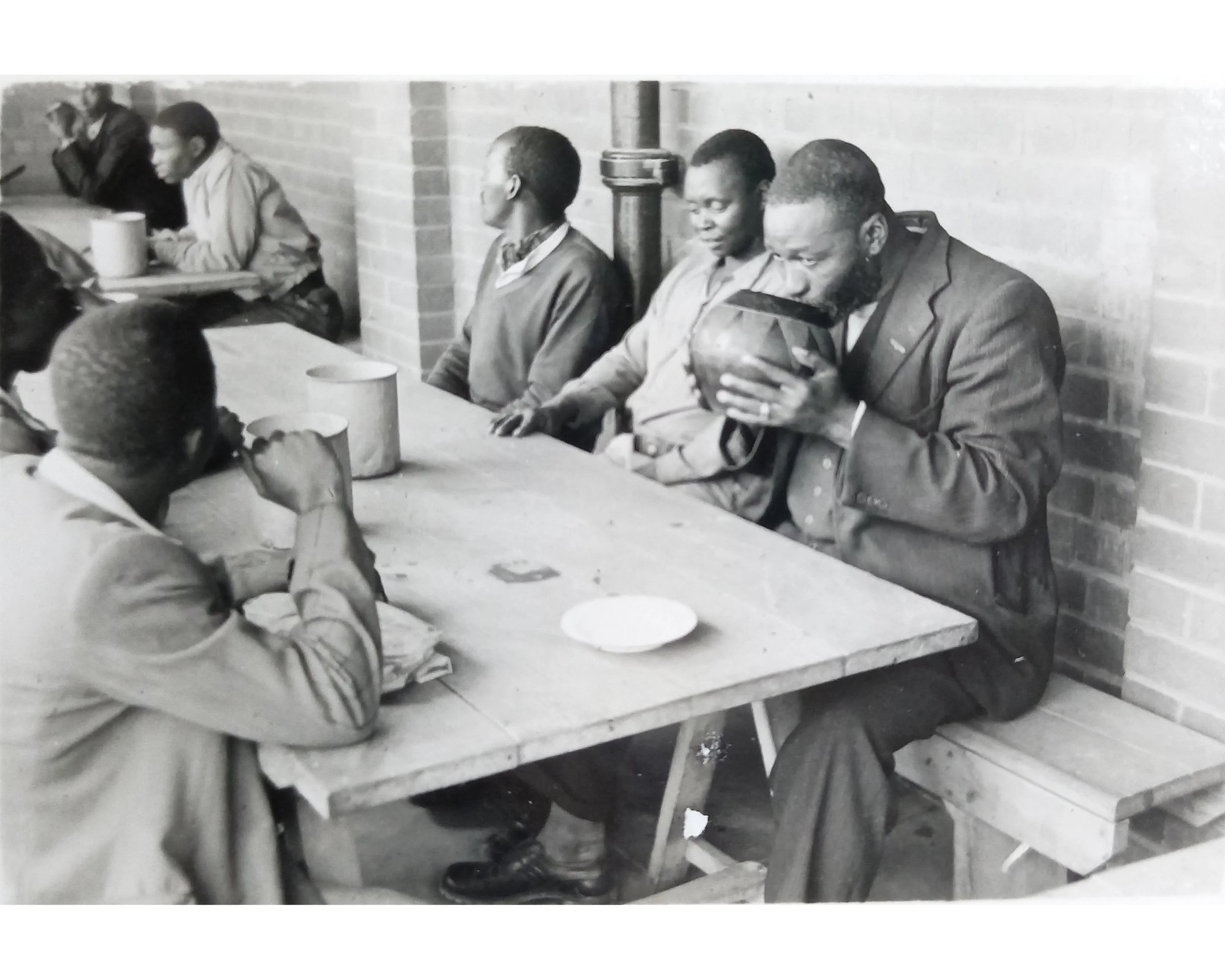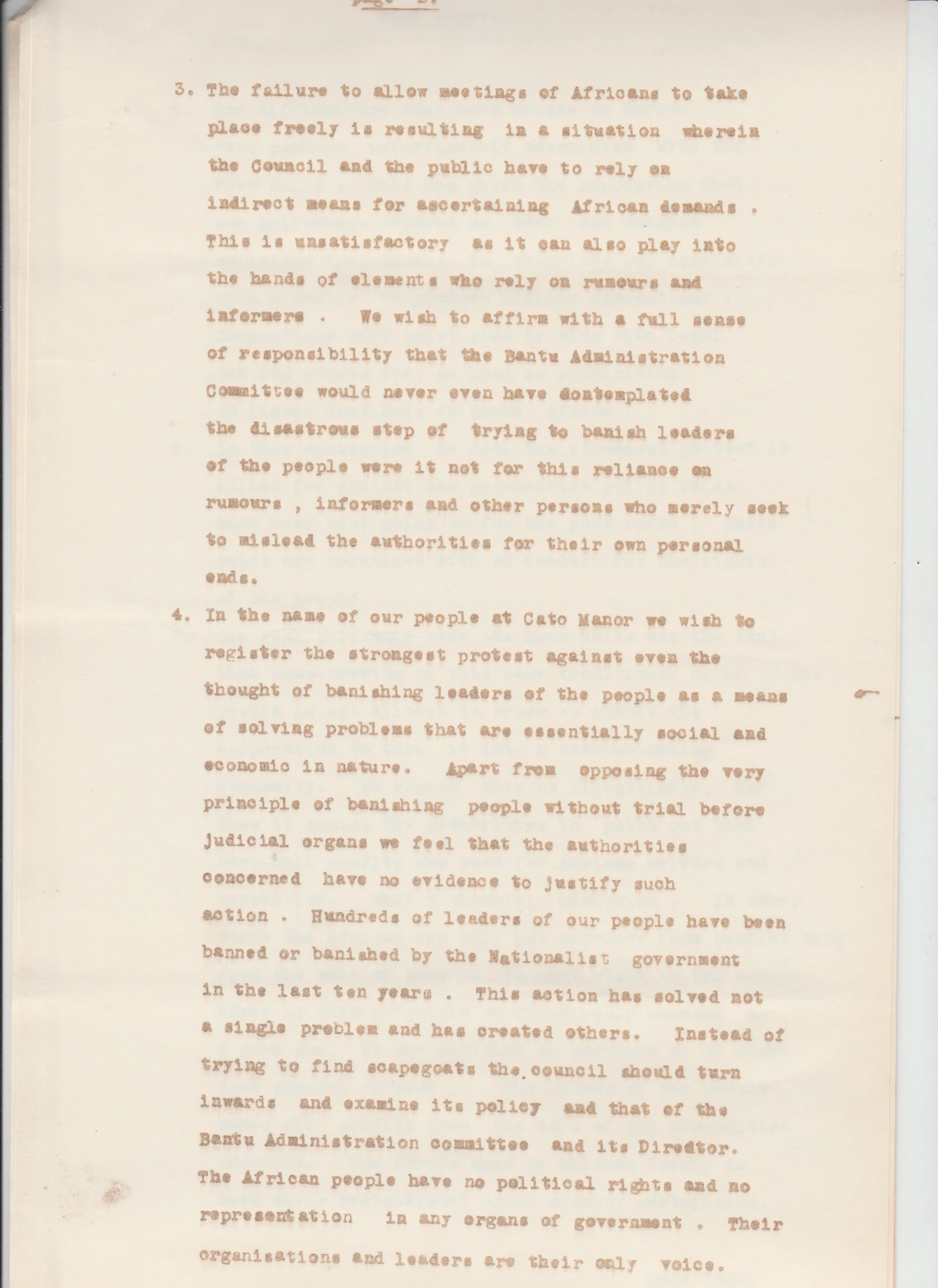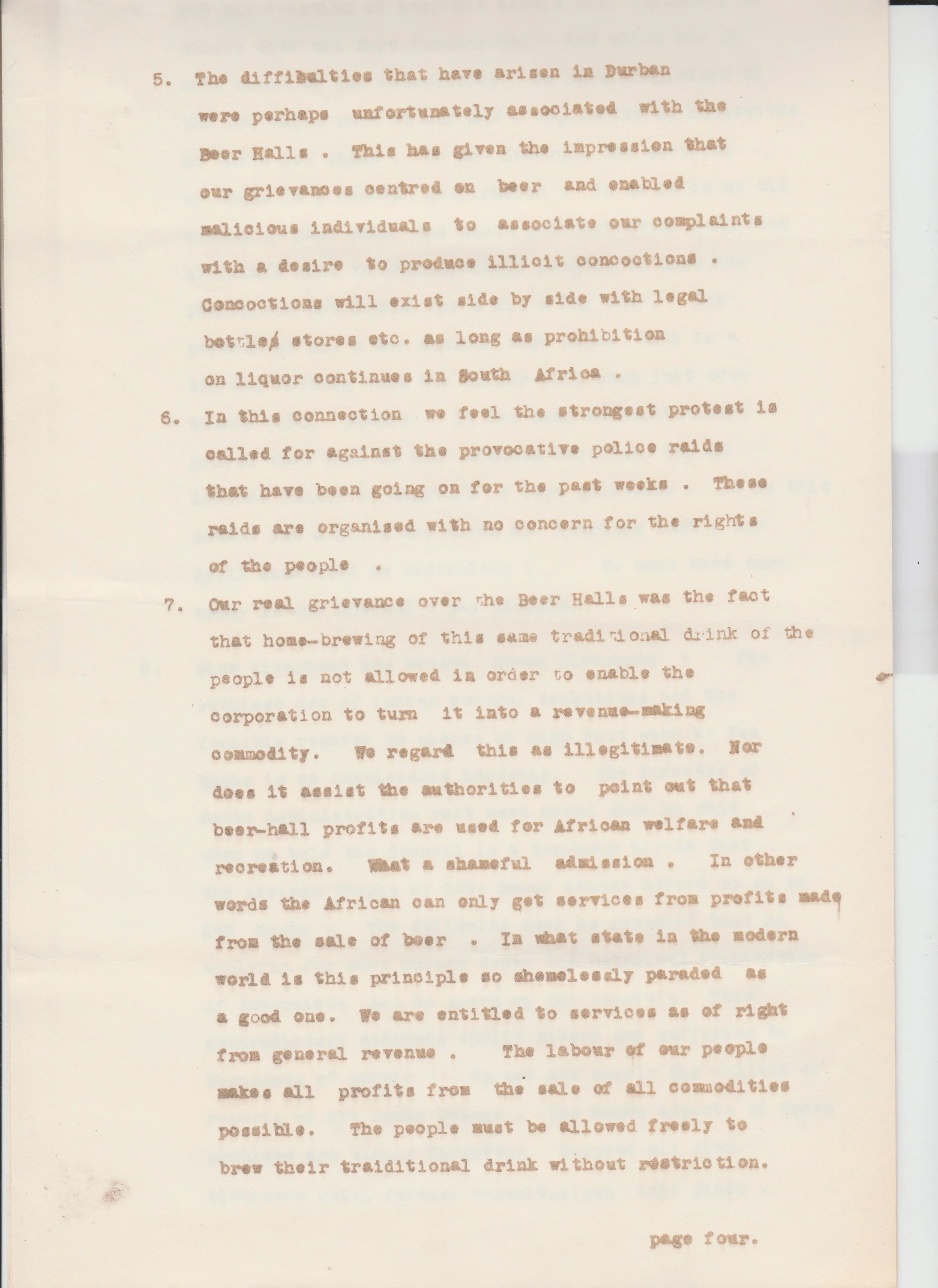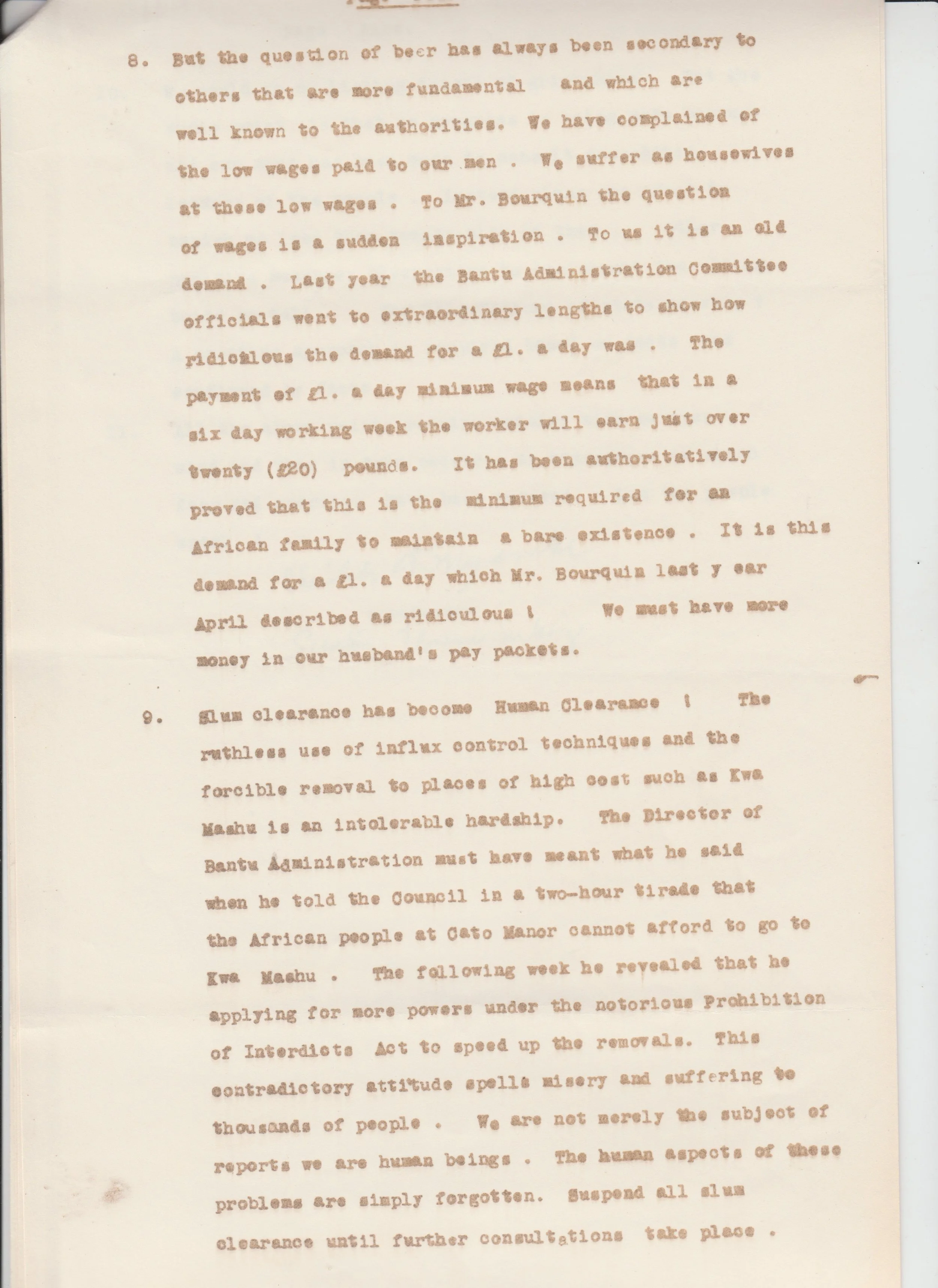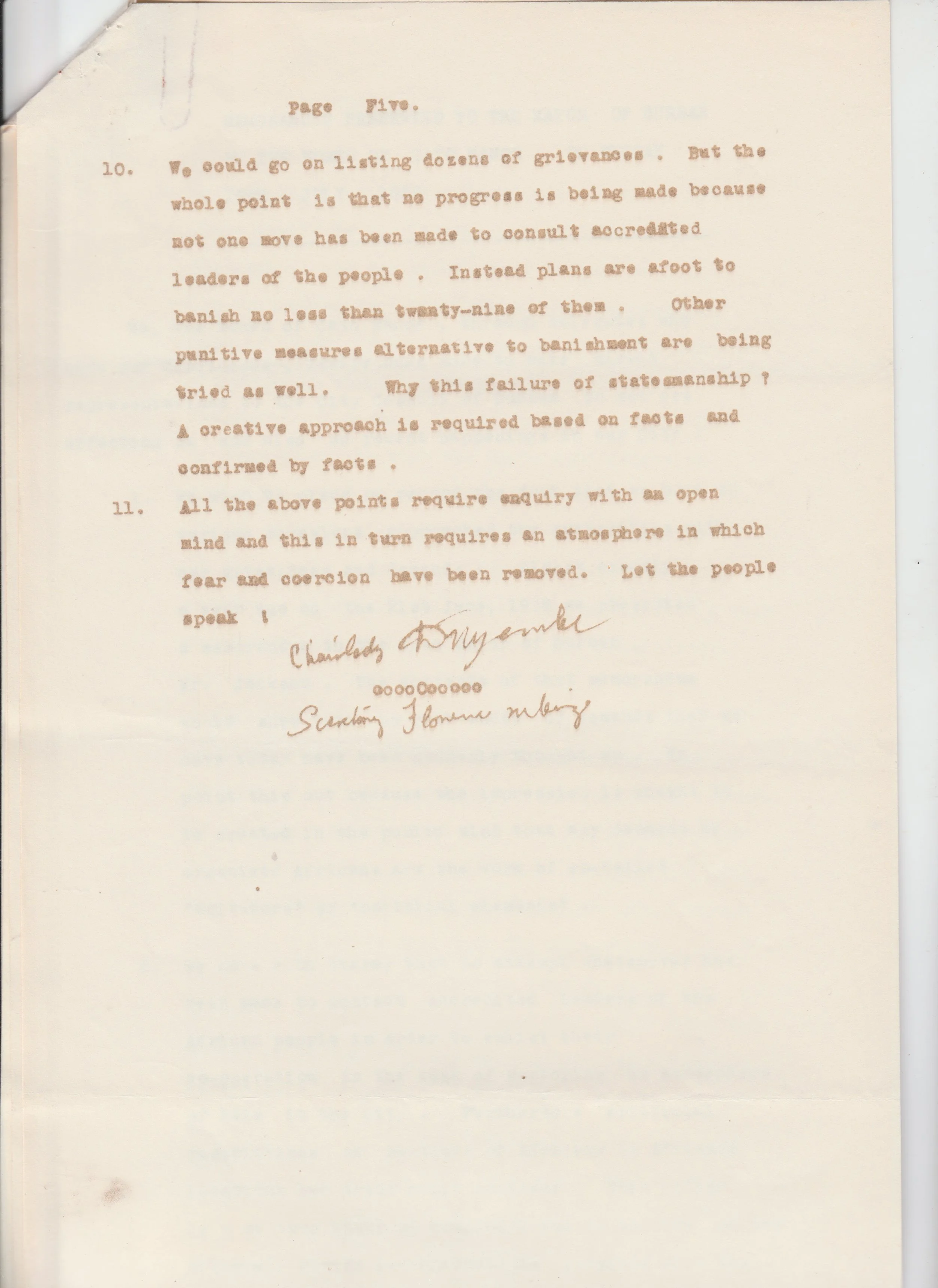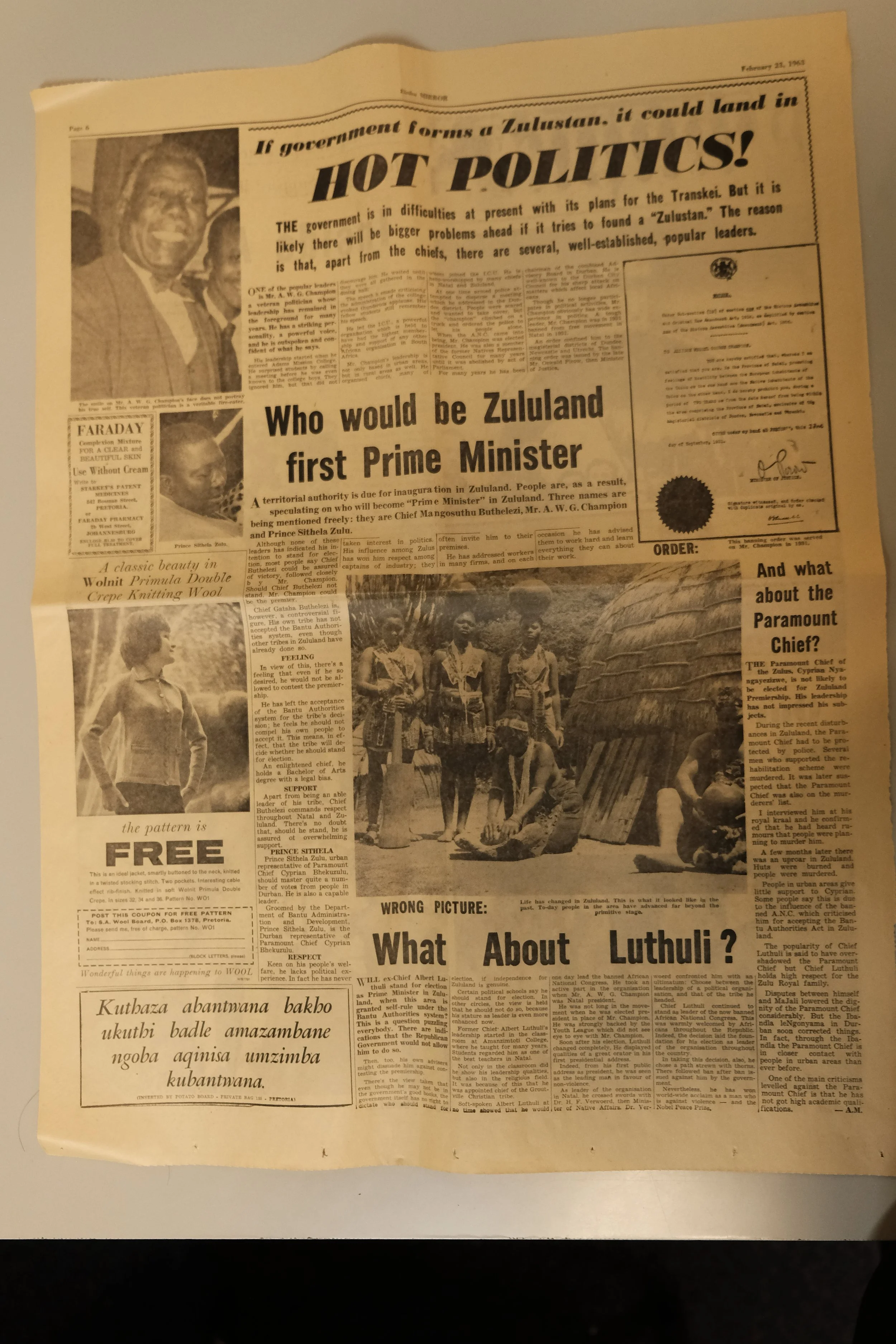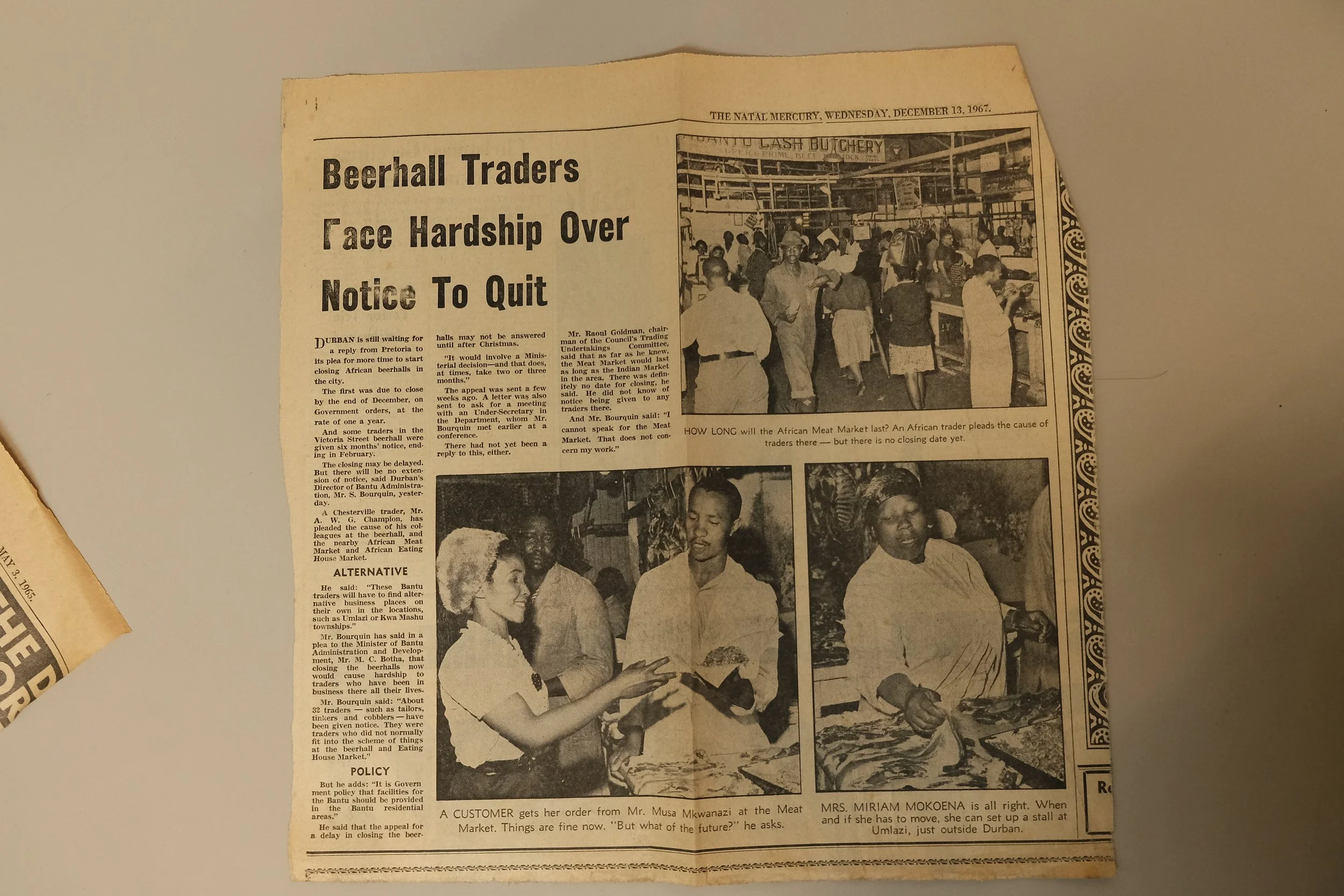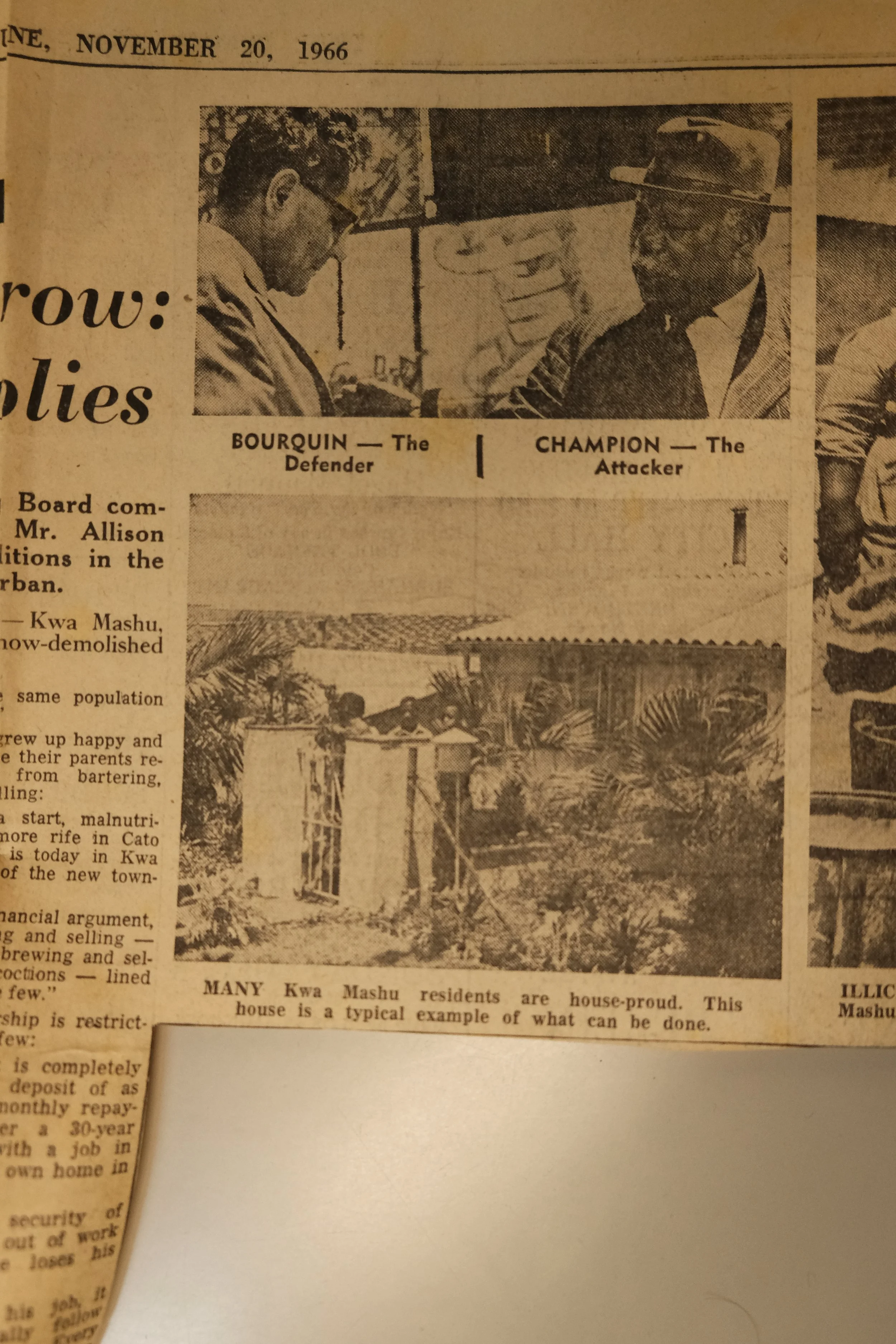
uMqombothi, uBhokweni neJuba
uMqombothi, uBhokweni neJuba (2022 - ) is a multimedia artistic research project, a reflection of the under explored topic - The Durban System.
A starting point for this body of work is the 1908 South African Native Beer Act that illegalised and controlled the age-old production of sorghum-based beer called uMqombothi (in KwaZulu). The act was part of a global colonial system (called alco-colonisation) under which the production and trade of alcohol was used to dispossess black peoples in the so-called colonies across the African continent. At the centre of this work and the surrounding events is the humble grain, sorghum. The title of the project therefore follows the age-old cultural practice of making and consuming uMqombothi to its state sanctioned uBhokweni (cynically named after the chief administrator of black life in Durban, SB Bourquin, 1914 - 2004) all the way to the point that it becomes a privately owned brew, called iJuba in KwaZulu-Natal. The Durban System is composed of several interlinked Acts and laws which made way for the architectural intervention of Beerhalls; the State controlled infrastructure where the native could buy and consume their age-old sorghum brew.This project, however, focuses on a sequence of events that played out in Durban (KwaZulu-Natal, South Africa) as a consequence of these Acts and laws under the Durban System. At the forefront of the resistance to the said system were black women who eventually staged the Beerhall Riots of 1959. In the ashes of the Beer Hall Riots lay the full might of Black women to which the State had to attend. Such moments of public intensity are read through ruin and destruction, ignoring the prior attempts of redress and the ordinary lives that define the event.The birth of the Durban System
While the weaponising of alcohol in South Africa was implemented in what was called the ‘Cape Colony’, its system was later crafted in the city of Durban and exported into other parts of Southern Africa.
This brew served as a key source of income for black women migrating into the city of Durban. By confiscating and illegalizing the production and selling of the age-old sorghum based brew, the State cut black women from this economic life line and trade within the city. Effectively reducing their role in public life, suppressing their political agency, poisoning the black family in the urban epoch and enabling a gendered urban dependency.
After the establishment of the Durban System, beer revenue was ploughed into the maintenance and establishment of: barracks, beer halls, hostels and beer breweries. This State monopolised selling of umqombothi through its own Beer Halls imposed drinking permits, displacing an age-old social practice into a closed compound system of capital extraction. The profits financed the Native Affairs Administration which controlled the influx and settlement of black people in the city. Until 1929, Durban remained the only town in South Africa with a self-supporting Native Revenue Account. Durban was viewed as a crucible, seemingly creating the most efficient system of native administration. This legal framework prevented the emergence of a black middle class; reports estimate the revenue netted a total of half a million pounds between 1908 until the 1930s.
Short Film: iGama lami nguPhumzile Nkosi (Phumzile Nkosi! Is my name)
The blow to the Durban System was delivered in the form of a planned beer hall boycott which came to be known as the women-led Beer Hall Riots of 1959. The women of Cato Manor feature as the long standing protagonist against the state on the question of native beer and its associated politics. So powerful was the movement that it led to the decision to repeal the law.The Durban System’s collapse made way for the next generation of sorghum brew called iJuba, which was then a product of a privately owned company, The United Breweries. This short film draws from archival material narrated by Ms Phumzile Nkosi who participated in the riots. Ms Nkosi narrates her arrival to Durban and her recollection of the night preceding and after the 1959 Beer Hall riots.




Correspondence, media and documentation
“We the women of Cato Manor, through delegates who have our confidence, desire once more to make direct representations to the City Council of Durban on matters affecting us and also on recent happenings in our city...”
Memorandum Presented to the Mayor of Durban By The Women of Cato Manor, On Friday 10th July, 1959. Kellie Campbell Collection, DurbanA performance lecture (Icala lemthombo, the case of stolen sorghum) can be found here. It takes the form of a court hearing, presenting evidence against the Durban Corporation pertaining to the case of stolen umqombothi through the Native Beer Act of 1908. Including a film testimony by one of the women in the 1959 Beer Hall riots.2025
Moving into 2025, under the fellowship, the project sets to develop the following items:
7.1. living archives:
Linked to the Living Archives workshop, the intention is to develop a full research framework and methodology for tracing the names, surnames and biographies of the women in the archival photographs. Further to this tracing is a carefully considered research method of utilizing the photographs to reach the surviving relatives of the women in the archive. At this point (subject to adaptation according to research outcomes) the relatives would be invited to a workshop which will showcase the archival material. We will work with a therapist/ counselor/ restorative justice facilitator to think together around questions pertaining to:
- Why, and to what are we inviting the relatives?
- How do they enter the room?
- Who will be in, and what happens in the room?
- And, what happens post the workshop?
We wish to emphasise that the intention is to develop (a) the methodology for the research and (b) the framework for the workshop but will not host the workshop at this point rather, we will engage the expertise of a therapist/counselor/ social justice facilitator who would co-develop a framework for an eventual workshop at a later stage once the project has more funds available.
The last piece in this chapter concerns a seminar. We are working with the Durban based collective, Community Archive Project (CAP) towards a day-long (public facing) seminar exploring documentary image making, archival ruptures and caring/ harm reduction against violence. The motivation behind working with CAP simply allows us to speak directly to the photography community of Durban. The second benefit of working with CAP has to do with the prospect of co-funding the seminar therefore keeping costs manageable for both entities. We are currently considering Ingrid Masondo as the invited speaker with the potential for a second speaker although this is dependent on further conversations with CAP.
7.2 City walk and web mapping Spaces of Black Repair:
Our research for the Living Archives and its many people and sites, has presented us with a compelling list of key buildings, sites and facilities connected to black repair and organising in the then city of colonial Natal. The prospect of a walk as a method to animate this history began to solidify and for the first time, we led a pilot of the walk to two cultural researchers/ practitioners (Noah Anderson and Makda Ishak) from Berlin, Germany. The intention behind the pilot was to test the feasibility and potential of the walk in further deepening and contending with black heritage in the Durban city centre. Some practical considerations for the walk included, pace, narrative arch (whether chronological or driven by route), integrating visual material and the most feasible route.
While the city walk integrates the materiality, the physicality and tangibility of the history, we wanted to have this mapping available for someone who cannot take the walk, the solution here was a web-map.
The web map, titled Spaces of Black Repair, also expanded its potential as we populated it, the web object broadened our horizon beyond a static repository. As such, we will make this map open source, as part of the campaign, so that others may contribute to it. We still need to figure out how to make it open source whilst maintaining a vetting process.
At the level of storytelling, the city walk titled ‘places of black repair’ has been yet another way of narrating the Native Beer Act and its unfolding events. There is potential for the walk to become the vessel through which we lobby for some of the buildings to be acknowledged as official heritage buildings since most heritage buildings in Durban are linked to the history of settler society. Although that is for much later in the project.
This Act is surrounded by a set of events which have to be read in conjunction with the Native Beer Act, they are; Hut Tax (1849), Shepstone’s Togt System (1874), the closed compound system (1885) and finally, the repeal of the Durban System (approximately 1900 - 1910).

